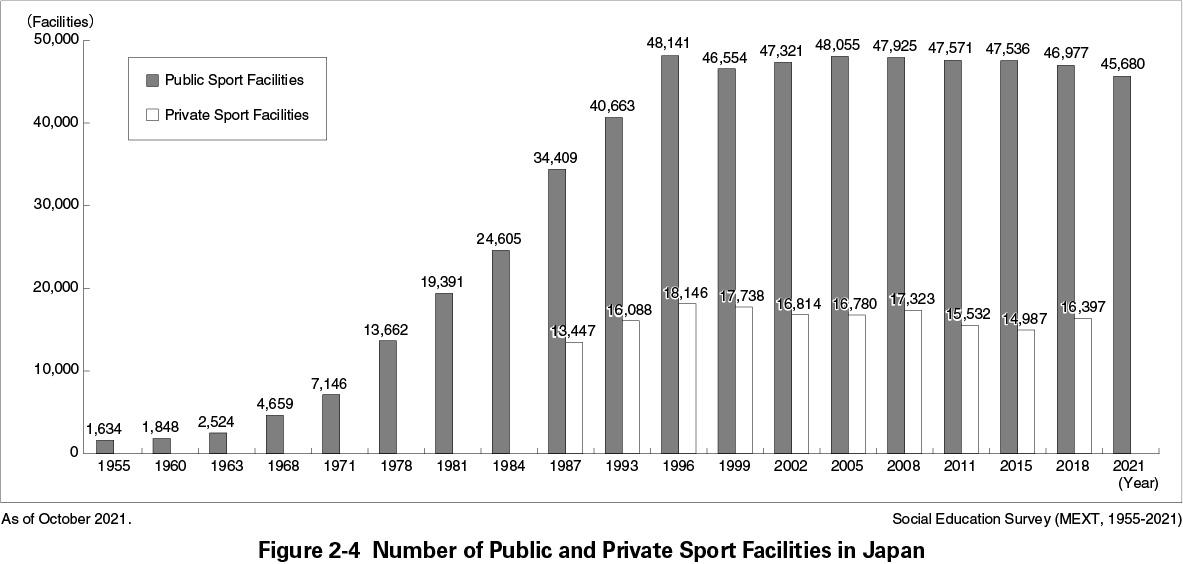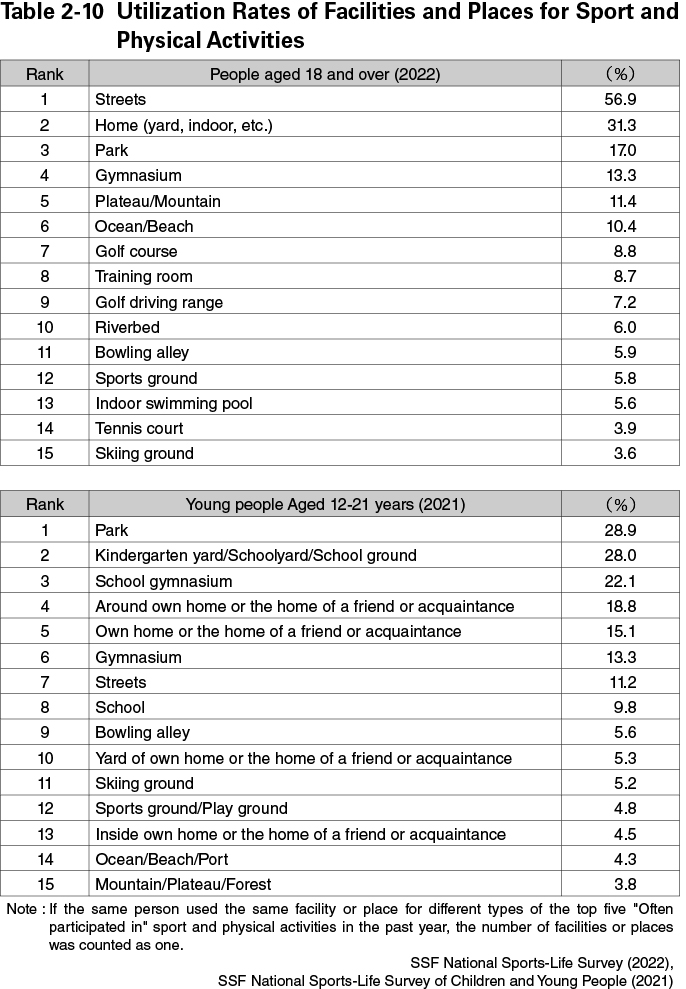This article highlights the following points;
1. Public, Private and School Facilities
2. Usage of Sport Facilities
We use cookies to optimize and continuously improve our website for individual users. By closing this banner or continuing to view the website, you are agreeing to the use of cookies for this purpose, as detailed in our Privacy Policy.
This article highlights the following points;
1. Public, Private and School Facilities
2. Usage of Sport Facilities
According to the “Social Education Survey” of Ministry of Education, Culture, Sports, Science and Technology (MEXT), the number of public sport facilities in Japan increased from the time the survey started in the 1950s to the 1990s, peaked at 48,055 in 2005 since the 2000s, and has remained flat or declined slightly since then, reaching 45,680 in 2021 (Figure 2-4). Similarly, the number of private sport facilities has declined from 18,146 in 1996 to 14,987 in 2015 and 16,397 in 2018.
Moreover, many schools and educational organizations own sport facilities such as gymnasiums, playgrounds and swimming pools, which are used for their physical education classes or school sport clubs. According to the “Survey on the Current Status of Facilities for Physical Education and Sports Activities” (2018) conducted by MEXT, there were 113,054 “school sport facilities” (in elementary, junior high, high, vocational schools, etc.). The number of such facilities has decreased by about 20,000 from the same survey in 2008 to 116,029 in 2015 and has decreased by about another 3,000 since then.

In the SSF National Sports-Life Survey, men and women aged 18 and over were asked questions about the usage of sport facilities and locations when engaging in sport and physical activities, and the same questions were asked to young people aged 12 to 21. According to the results, 56.9% of those aged 18 and over used “Streets” the highest, followed by “Home (yard, indoor, etc.)” at 31.3% and “Park” at 17.0%, indicating that sport and physical activities were being conducted in familiar places such as at home and around home. In particular, there was a significant increase from 23.9% in the 2018 survey for “Home (yard, indoor, etc.)”. Similarly, for those aged 12-21, “Park” was the highest at 28.9%, followed by “Kindergarten yard/Schoolyard/School ground” at 28.0%, “School gymnasium” at 22.1%, “Around own home or the home of a friend or acquaintance” at 18.8% and “Own home or the home of a friend or acquaintance” at 15.1%. Based on these results, it was confirmed that while the main places for sport and physical activities for young people was at schools, as with those aged 18 and over, sport and physical activities were also frequently performed at home and around home.
